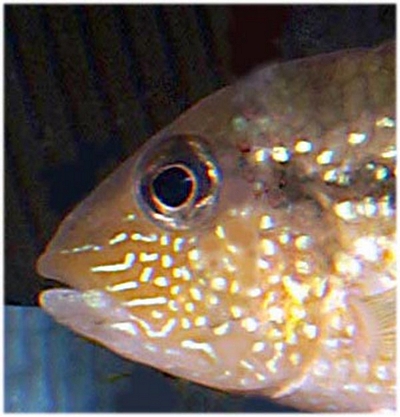Tahuantinsuyoa, Kullander 1986
© Tekst og bilder av Alf Stalsberg,
med mindre annet er angitt.
|

|
CLICK ON ANY IMAGE TO ENLARGE IT

Tahuantinsuyoa
chipi
Tahuantinsuyoa
macanzatza
The new Genus Tahuantinsuyoa was established by Dr Kullander in 1986, the same year he established a new Genus for Bujurquina.
In the beginning there was only one fish in the Genus, namely Tahuntinsuyoa macanzatza. Later he described another Tahuantinsuyoa, namely Tahuantinsuyoa chipi. I will come back with more information when I am able to get the fish. This fish is not big, only around 10 cm. They are not the most colorful of fish, and people buying fish for their color will probably pass over this fish if they see it in a pet store. But if you are interested in the fish and not particularly the colors, then this is the right fish to buy.
The fish is a delayed mouthbrooder or larvophile. That means that they lay their eggs on the substrate. The eggs will hatch after about two days at a temperature of 26°C. Then they pick up the fry and carry them for about a week, until the yolksac is used. Then you can feed them on newly hatched brine shrimp nauplii. After a while you can start feeding them with crushed flake food and then you can feed them with whatever they can take. They are not fussy eaters.
These fish prefer a leaf as a spawning substrate, but if there are no leaves in the tank they can spawn on a piece of bogwood, rock or broad leaves of an Echinodorus. If you are familiar with Bujurquina then you will see that there are great similarities between these fishes. Markings, color and size are the first things you will see. Their behavior is also similar, but the Tahuantinsuyoa have a more pointed head shape.
So this was a start on a page about Tahuantisuyoa. I'm afraid that this page isn't long, since there are so far, only two fish in the genus. But as soon as I have information or get hold of the other one, Tahuantinsuyoa chipi, I'll let you know.